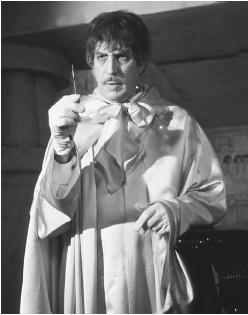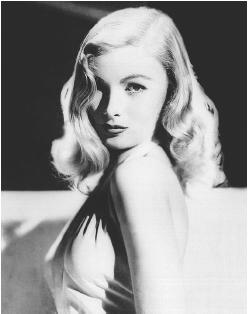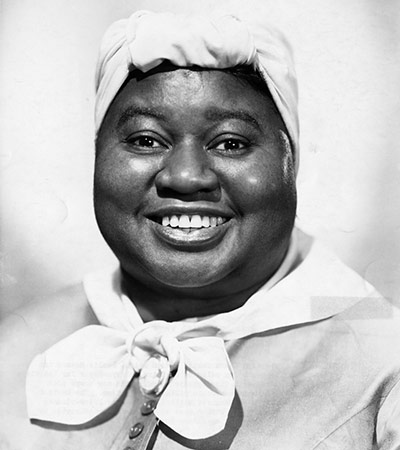1940 Actors And Actresses Biography.
The first sound studios opened in France in the autumn of 1929, inaugurating the golden age of filmed theater, and also precipitating an aesthetic crisis manifested in heated debate about the nature of cinematic art. While adherents to the legacy of Impressionism, such as Gance and L'Herbier, clung to the primacy of the image as the fundamental element of film language, directors like Duvivier and Renoir embraced sound as integral to the film medium. The film industry was also subject to financial crisis and over the decade was reorganized around companies like La Société Nouvelle des Établissementśté Nouvelle Pathé-Gaumount (the SNEG) and the Socie Cinéma (SNPC). Nonetheless, some of the great films of the French cinema were produced between 1934 and World War II, in part as the result of an influx of directors and technicians fleeing the Nazis from other countries. One such figure was the German director Max Ophüls (1902–1957), creator of the film La Tendre ennemie ( The Tender Enemy , 1936), who became a French citizen in 1938. The production of feature films stabilized at about 100 to 120 films per year, a level of production that remained more or less the norm for the rest of the century.
Two directors who forged their own style within the confines of the filmed theater genre were Marcel Pagnol (1895–1974) and Sacha Guitry (1885–1957). Pagnol, a successful director, writer, and producer, established his own studios in the South of France and produced a body of work associated with that region. Films for which he wrote the screenplay include the "Pagnol trilogy," made up of Marius (1931), Fanny (1932), and César (1936), dealing with the "little people" of Marseilles. The success of these films owed much to the superb performances of the actors, including (Jules) Raimu (1883–1946), Pierre Fresnay (1897–1975), Fernand Charpin (1887–1944), and Orane Demazis (1894–1991). Because of the subtlety and originality of his productions, and also because of the way that his work constituted an early exploration of regional identity, Pagnol's talent was recognized by critics such as André Bazin who, in principle, opposed the filmed theater style. Renoir's Toni (1935), a pivotal film in the development of the Italian neorealism, is one of the many films that demonstrated the importance of Pagnol's work for the future of French cinema. Both Pagnol's films and novels would influence the development of what is commonly called heritage cinema in the late 1980s and early 1990s. Guitry, less well known outside of France, was an actor and writer as well as a director. In his films of this period, he captured the essence of Parisian light comedy, a genre that disappeared during World War II. During this period French cinema also continued to borrow from the tradition of the music hall with films such as Zouzou (1934), starring the African American singer-dancer Josephine Baker (1906–1975).
In May 1936 the Popular Front, a historic alliance of leftist and radical interests, came to power, ruling until October 1938. This period, which saw the introduction of major social changes, such as paid holidays, trade union rights, and a public health service, unleashed a burst of creative intellectual and artistic energy, especially at the cooperative Ciné-Liberté, of which Renoir was a member. The rise and ascendancy of the Popular Front manifested itself in films that emphasized the worker. Renoir, for example, directed Le Crime de Monsieur Lange ( The Crime of Monsieur Lange , 1936), the story of a worker's cooperative, the epic La Marseillaise (1938), and was involved in the making of La Vie est à nous ( The People of France , 1936), a communist propaganda film. Though light comedies and musicals were more popular with the public, these films were praised by critics and film historians. With the defeat of the Popular Front, the melancholic tendencies of poetic realism became more marked and were reflected in narratives dealing with doomed love affairs, betrayals, and murders, usually set in Paris in working-class settings. Such films are exemplified by Le Quai des brumes ( Port of Shadows , 1938) and Le Jour se lève ( Daybreak , 1939) by Marcel Carné (1909–1996). Both films starred Jean Gabin (1904–1976), who, with Arletty (Arlette-Léonie Bathiat; 1898–1992), came to incarnate French working-class values, especially in terms of their spoken delivery, which was marked by a strong demotic accent. In addition to Carné, directors associated with this style were Renoir, Duvivier, and Jean Grémillon (1901–1959).
Read more: Sound film and theclassical era: 1929–1940 - France - actor, actress, children, director, producer, music, cinema, story.








The first sound studios opened in France in the autumn of 1929, inaugurating the golden age of filmed theater, and also precipitating an aesthetic crisis manifested in heated debate about the nature of cinematic art. While adherents to the legacy of Impressionism, such as Gance and L'Herbier, clung to the primacy of the image as the fundamental element of film language, directors like Duvivier and Renoir embraced sound as integral to the film medium. The film industry was also subject to financial crisis and over the decade was reorganized around companies like La Société Nouvelle des Établissementśté Nouvelle Pathé-Gaumount (the SNEG) and the Socie Cinéma (SNPC). Nonetheless, some of the great films of the French cinema were produced between 1934 and World War II, in part as the result of an influx of directors and technicians fleeing the Nazis from other countries. One such figure was the German director Max Ophüls (1902–1957), creator of the film La Tendre ennemie ( The Tender Enemy , 1936), who became a French citizen in 1938. The production of feature films stabilized at about 100 to 120 films per year, a level of production that remained more or less the norm for the rest of the century.
Two directors who forged their own style within the confines of the filmed theater genre were Marcel Pagnol (1895–1974) and Sacha Guitry (1885–1957). Pagnol, a successful director, writer, and producer, established his own studios in the South of France and produced a body of work associated with that region. Films for which he wrote the screenplay include the "Pagnol trilogy," made up of Marius (1931), Fanny (1932), and César (1936), dealing with the "little people" of Marseilles. The success of these films owed much to the superb performances of the actors, including (Jules) Raimu (1883–1946), Pierre Fresnay (1897–1975), Fernand Charpin (1887–1944), and Orane Demazis (1894–1991). Because of the subtlety and originality of his productions, and also because of the way that his work constituted an early exploration of regional identity, Pagnol's talent was recognized by critics such as André Bazin who, in principle, opposed the filmed theater style. Renoir's Toni (1935), a pivotal film in the development of the Italian neorealism, is one of the many films that demonstrated the importance of Pagnol's work for the future of French cinema. Both Pagnol's films and novels would influence the development of what is commonly called heritage cinema in the late 1980s and early 1990s. Guitry, less well known outside of France, was an actor and writer as well as a director. In his films of this period, he captured the essence of Parisian light comedy, a genre that disappeared during World War II. During this period French cinema also continued to borrow from the tradition of the music hall with films such as Zouzou (1934), starring the African American singer-dancer Josephine Baker (1906–1975).
In May 1936 the Popular Front, a historic alliance of leftist and radical interests, came to power, ruling until October 1938. This period, which saw the introduction of major social changes, such as paid holidays, trade union rights, and a public health service, unleashed a burst of creative intellectual and artistic energy, especially at the cooperative Ciné-Liberté, of which Renoir was a member. The rise and ascendancy of the Popular Front manifested itself in films that emphasized the worker. Renoir, for example, directed Le Crime de Monsieur Lange ( The Crime of Monsieur Lange , 1936), the story of a worker's cooperative, the epic La Marseillaise (1938), and was involved in the making of La Vie est à nous ( The People of France , 1936), a communist propaganda film. Though light comedies and musicals were more popular with the public, these films were praised by critics and film historians. With the defeat of the Popular Front, the melancholic tendencies of poetic realism became more marked and were reflected in narratives dealing with doomed love affairs, betrayals, and murders, usually set in Paris in working-class settings. Such films are exemplified by Le Quai des brumes ( Port of Shadows , 1938) and Le Jour se lève ( Daybreak , 1939) by Marcel Carné (1909–1996). Both films starred Jean Gabin (1904–1976), who, with Arletty (Arlette-Léonie Bathiat; 1898–1992), came to incarnate French working-class values, especially in terms of their spoken delivery, which was marked by a strong demotic accent. In addition to Carné, directors associated with this style were Renoir, Duvivier, and Jean Grémillon (1901–1959).
Read more: Sound film and theclassical era: 1929–1940 - France - actor, actress, children, director, producer, music, cinema, story.
1940 Actors And Actresses

1940 Actors And Actresses

1940 Actors And Actresses

1940 Actors And Actresses

1940 Actors And Actresses

1940 Actors And Actresses

1940 Actors And Actresses

1940 Actors And Actresses

1940 Actors And Actresses
Actresses Of The 1940's - Part 2
Actresses Of The 1940's - Part 1
No comments:
Post a Comment